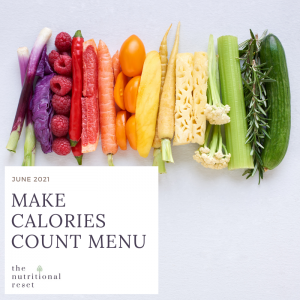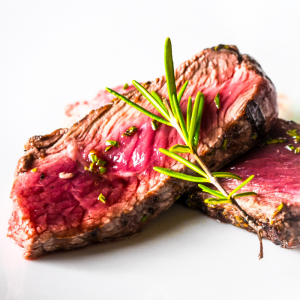 In my last blog post, Rather Than Count Calories, Make Calories Count, I discussed how calories are not all created equal in their effects on your body. Your body survives and thrives off the nutrients provided by your food. That’s why it is so important to get as much nutrient bang for your calorie buck as you can – so your meals will optimize your health and energy.
In my last blog post, Rather Than Count Calories, Make Calories Count, I discussed how calories are not all created equal in their effects on your body. Your body survives and thrives off the nutrients provided by your food. That’s why it is so important to get as much nutrient bang for your calorie buck as you can – so your meals will optimize your health and energy.
In the same post, I linked to the Aggregate Nutrient Density Index (ANDI) to show how many popular foods stack up in terms of micronutrient density per calorie. It is no surprise that the majority of the highest ranking foods are vegetables and fruits. And dark leafy greens reign supreme.
But please don’t bog yourself down with all the numbers. A simple way to ensure you get a full complement of micronutrients in your diet is to “eat the rainbow”, including dark leafy greens, daily. Challenge yourself to consume as many colourful foods as you can each day. My Make Calories Count Menu covers off red, orange, yellow, green, purple, brown and white. Add some blueberries with breakfast and you are golden! I hope you enjoy this technicolour menu and share it with your family and friends!
To receive the recipes in my Make Calories Count Menu, sign up here.
Make Calories Count Menu
Breakfast: Asian Veggie Omelet (see below for the benefits of bok choy for breakfast)
Lunch: Mango, Edamame & Cabbage Salad with Peanut Sauce (full of flavour, colour and crunch, this salad is high in protein and fibre and keeps 3-4 days in the fridge)
Dinner: Kale Greek Salad with Steak (perfect on a sultry summer evening, the steak and red peppers can be grilled on the BBQ or roasted in the oven; use pre-washed, organic baby kale to save time if you wish)
Join The Nutritional Reset community here to receive this month’s recipe collection today (as well as each month to come)!
A few featured foods …
 Bok Choy
Bok Choy
I eat a LOT of leafy greens, so I like to switch things up a bit. Even I can eat only so much kale and broccoli. Bok choy is equally good raw (chopped up in a salad), roasted, braised or sautéed (as in this menu’s omelet). The ANDI score of bok choy, at 895, is more than twice that of broccoli. Like broccoli, kale, cabbage and Brussels sprouts, it is a Brassica. This family of veggies has cancer-protective properties different than other vegetables as they are particularly high in glucosinolates, whose breakdown products also cause their pungent taste. Greens are an (over) easy addition to eggs at breakfast and a great start toward your recommended 7-10 daily servings of veg and fruit.
 Beef
Beef
While beef is not particularly high on the ANDI, it is a rich source of six nutrients commonly lacking globally: iron, zinc, calcium, folate and vitamins A and B12. Only 213 calories worth of beef (98 grams) will provide adults with 1/3 of the recommended dietary intake. The only other foods that will give you a better bang for your calorie buck for these nutrients are organ meats, small dried fish, bivalves, crustaceans, goat (most of which aren’t top on people’s shopping lists) and dark leafy greens.* So get the best of both worlds and enjoy a (sustainably-raised, grass-fed) steak salad now and again, with emphasis on the salad. I hope you enjoy my Kale Greek Salad with Steak.
*Data from soon to be published study by Ty Beal, Research Advisor on the Knowledge Leadership team at the Global Alliance for Improved Nutrition (GAIN).
Cooking your own food is the single most impactful step you can take to improve your health and energy!
I hope you enjoy my Make Calories Count Menu. Sign up here to receive the download link for this latest Menu of the Month. And if you want to cook more of your own food but don’t know what to make or have the time to organize your own menus and shopping lists, The Nutritional Reset offers a meal planning service. It makes preparing tasty, nutritious meals a snap. Click here to find out more.